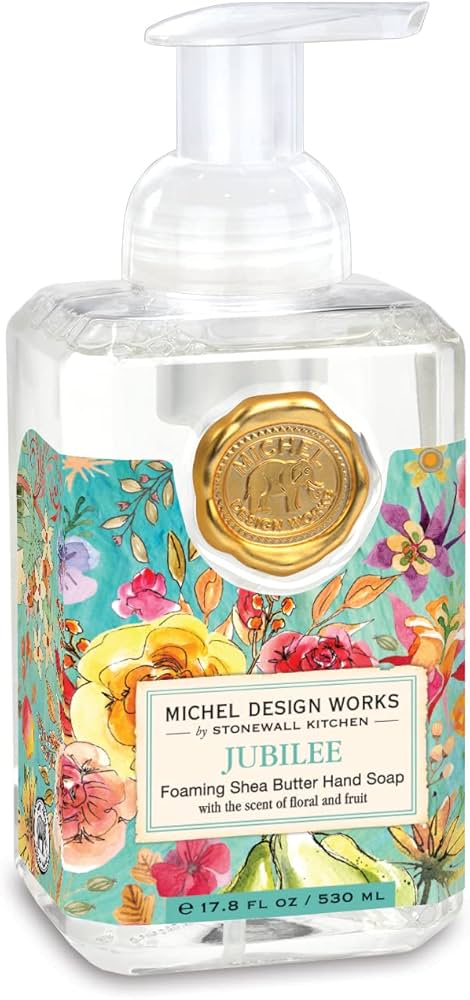
Many brands are now partnering with micro-influencers to reach a wider audience and promote their products or services. Micro-influencers are social media users who have a smaller but more engaged following than traditional celebrities or macro-influencers.
There are many benefits to working with micro-influencers. First, they are more affordable than traditional celebrities or macro-influencers. Second, they have a more engaged following, which means that their content is more likely to be seen and shared. Third, micro-influencers are more likely to be authentic and relatable, which makes them more effective at persuading their followers to take action.
If you are a brand that is looking to reach a wider audience and promote your products or services, then working with micro-influencers is a great option. Here are a few tips for working with micro-influencers:
- Do your research and find micro-influencers who are relevant to your brand and target audience.
- Be clear about your goals and expectations.
- Provide micro-influencers with clear guidelines and support.
- Be patient and give micro-influencers the time and space to create content that is authentic and engaging.
1. Authenticity
Authenticity is one of the most important qualities that brands look for when partnering with micro-influencers. Micro-influencers are seen as more authentic and relatable than traditional celebrities or macro-influencers, which makes them more effective at persuading their followers to take action.
There are a number of reasons why micro-influencers are seen as more authentic. First, they are often seen as more down-to-earth and relatable than traditional celebrities or macro-influencers. They are more likely to share their with their followers, and they are more likely to be transparent about their relationships with brands.
Second, micro-influencers often have a niche audience, which means that they are able to connect with their followers on a more personal level. They are more likely to understand the needs and interests of their followers, and they are more likely to create content that is relevant and engaging.
The authenticity of micro-influencers makes them more effective at persuading their followers to take action. When micro-influencers recommend a product or service, their followers are more likely to trust their opinion and to take action.
For example, a study by Nielsen found that 92% of consumers trust recommendations from micro-influencers. This is significantly higher than the 61% of consumers who trust recommendations from traditional celebrities.
Brands that work with micro-influencers can achieve a number of benefits, including increased brand awareness, lead generation, and sales. However, it is important to remember that authenticity is key when working with micro-influencers. Brands should look for micro-influencers who are aligned with their brand values and who are willing to be transparent about their relationships with brands.
2. Engagement
Micro-influencers have a more engaged following than traditional celebrities or macro-influencers. This means that their content is more likely to be seen and shared, which can be a major benefit for brands that work with micro-influencers.
There are a number of reasons why micro-influencers have a more engaged following. First, they are often seen as more authentic and relatable than traditional celebrities or macro-influencers. They are more likely to share their with their followers, and they are more likely to be transparent about their relationships with brands.
Second, micro-influencers often have a niche audience, which means that they are able to connect with their followers on a more personal level. They are more likely to understand the needs and interests of their followers, and they are more likely to create content that is relevant and engaging.
The high level of engagement that micro-influencers enjoy with their followers can be a major benefit for brands that work with them. Brands can use micro-influencers to reach a wider audience, generate leads, and drive sales.
For example, a study by Markerly found that micro-influencers have a 22.2% higher engagement rate than traditional celebrities.
Another study by Nielsen found that consumers are 61% more likely to trust recommendations from micro-influencers than from traditional celebrities.
These studies show that micro-influencers can be a valuable asset for brands that are looking to reach a wider audience and achieve their marketing goals.
3. Affordability
Affordability is one of the key benefits of working with micro-influencers. Micro-influencers typically charge less for sponsored posts and other collaborations than traditional celebrities or macro-influencers. This makes them a more cost-effective option for brands, especially those with limited marketing budgets.
For example, a micro-influencer with 10,000 followers might charge $100 for a sponsored post, while a macro-influencer with 1 million followers might charge $10,000 for the same type of post. This significant difference in cost can make micro-influencers a more attractive option for brands that are looking to get the most bang for their buck.
In addition to being more affordable, micro-influencers can also be more effective than traditional celebrities or macro-influencers at driving sales. This is because micro-influencers have a more engaged following and are more likely to be trusted by their followers.
For example, a study by Markerly found that micro-influencers have a 22.2% higher engagement rate than traditional celebrities. Another study by Nielsen found that consumers are 61% more likely to trust recommendations from micro-influencers than from traditional celebrities.
These studies show that micro-influencers can be a valuable asset for brands that are looking to reach a wider audience and achieve their marketing goals. Micro-influencers are more affordable than traditional celebrities or macro-influencers, and they can be more effective at driving sales.
4. Niche
Micro-influencers often have a niche audience, which can be valuable for brands that are looking to target a specific demographic. A niche audience is a group of people who share a common interest or passion. This can be anything from fitness to fashion to travel. By partnering with micro-influencers who have a niche audience, brands can reach a highly targeted group of consumers who are likely to be interested in their products or services.
For example, a brand that sells fitness products might partner with a micro-influencer who is a fitness enthusiast and has a following of people who are interested in fitness. The micro-influencer could create content that promotes the brand’s products and provides their followers with valuable fitness tips and advice.
Another example is a brand that sells beauty products that might partner with a micro-influencer who is a beauty blogger and has a following of people who are interested in beauty. The micro-influencer could create content that promotes the brand’s products and provides their followers with valuable beauty tips and advice.
By partnering with micro-influencers who have a niche audience, brands can achieve a number of benefits, including:
- Increased brand awareness
- Lead generation
- Sales
- Building relationships with customers
- Creating a more authentic and engaging brand experience
If you are a brand that is looking to reach a specific demographic, then working with micro-influencers is a great option. Micro-influencers can help you to target your audience more effectively and achieve your marketing goals.
5. Trust
Trust is a key factor in the success of any brand. When consumers trust a brand, they are more likely to purchase its products or services. Micro-influencers have built trust with their followers by being authentic, transparent, and relatable. They share their personal experiences and opinions with their followers, and they are willing to answer questions and provide advice.
This trust is valuable to brands because it can be transferred to their products or services. When micro-influencers recommend a product or service to their followers, their followers are more likely to trust that product or service and to make a purchase. This is why brands are increasingly partnering with micro-influencers to promote their products or services.
For example, a study by Nielsen found that 92% of consumers trust recommendations from micro-influencers. This is significantly higher than the 61% of consumers who trust recommendations from traditional celebrities.
Another study by Markerly found that micro-influencers have a 22.2% higher engagement rate than traditional celebrities. This means that their content is more likely to be seen and shared, which can help brands to reach a wider audience.
The trust that micro-influencers have built with their followers is a valuable asset for brands. Brands can use micro-influencers to reach a wider audience, generate leads, and drive sales. However, it is important to remember that trust is a two-way street. Brands need to be transparent and honest with micro-influencers, and they need to be willing to listen to their feedback.
FAQs on Brands that Work with Micro Influencers
Micro-influencers have become increasingly popular with brands as a way to reach a wider audience and promote their products or services. However, there are still some common questions and misconceptions about working with micro-influencers.
Question 1: What are the benefits of working with micro-influencers?
There are many benefits to working with micro-influencers, including:
- Increased brand awareness
- Lead generation
- Sales
- Building relationships with customers
- Creating a more authentic and engaging brand experience
Question 2: How do I find the right micro-influencers to work with?
When looking for micro-influencers to work with, it is important to consider the following factors:
- Their niche
- Their audience size
- Their engagement rate
- Their authenticity
- Their pricing
Question 3: How much does it cost to work with micro-influencers?
The cost of working with micro-influencers varies depending on a number of factors, including their niche, their audience size, and their engagement rate. However, micro-influencers are typically more affordable than traditional celebrities or macro-influencers.
Question 4: How do I measure the success of my micro-influencer campaign?
There are a number of ways to measure the success of your micro-influencer campaign, including:
- Tracking website traffic
- Monitoring social media mentions
- Measuring sales
- Conducting surveys
Question 5: What are some common mistakes to avoid when working with micro-influencers?
Some common mistakes to avoid when working with micro-influencers include:
- Not setting clear goals and objectives
- Not providing micro-influencers with clear guidelines
- Not being transparent about your relationship with micro-influencers
- Not measuring the success of your campaign
Question 6: How can I build a successful long-term relationship with micro-influencers?
To build a successful long-term relationship with micro-influencers, it is important to:
- Be transparent and honest
- Be supportive and responsive
- Be willing to listen to their feedback
- Be fair and respectful
Tips for Brands that Work with Micro Influencers
Micro-influencers can be a valuable asset for brands looking to reach a wider audience and achieve their marketing goals. However, it is important to work with micro-influencers in a strategic and effective way.
Tip 1: Set Clear Goals and Objectives
Before launching a micro-influencer campaign, it is important to set clear goals and objectives. What do you want to achieve with your campaign? Do you want to increase brand awareness, generate leads, or drive sales? Once you know your goals, you can develop a strategy to achieve them.
Tip 2: Find the Right Micro-Influencers
Not all micro-influencers are created equal. It is important to find micro-influencers who are aligned with your brand values and who have a genuine interest in your products or services. You should also consider their niche, audience size, and engagement rate.
Tip 3: Provide Clear Guidelines
Once you have found the right micro-influencers, it is important to provide them with clear guidelines. This includes information on the campaign goals, the deliverables, and the brand’s expectations. Clear guidelines will help to ensure that the micro-influencers create content that is aligned with your brand and meets your expectations.
Tip 4: Be Transparent
It is important to be transparent with micro-influencers about your relationship with them. This includes disclosing any payment or other compensation that they will receive. Transparency will help to build trust and ensure that the micro-influencers are comfortable working with you.
Tip 5: Measure Your Results
It is important to measure the results of your micro-influencer campaign to see what is working and what is not. This will help you to improve your strategy and get the most out of your investment.
Summary
Working with micro-influencers can be a valuable way to reach a wider audience and achieve your marketing goals. However, it is important to approach micro-influencer marketing in a strategic and effective way. By following these tips, you can increase your chances of success.
Conclusion
Micro-influencers have become increasingly important for brands looking to reach a wider audience and achieve their marketing goals. Micro-influencers are authentic, relatable, and have a high level of engagement with their followers. This makes them an effective way to reach consumers and build relationships with them.
For brands, working with micro-influencers can provide a number of benefits, including increased brand awareness, lead generation, and sales. However, it is important to approach micro-influencer marketing in a strategic and effective way. By setting clear goals, finding the right micro-influencers, providing clear guidelines, being transparent, and measuring your results, you can increase your chances of success.
As the influencer marketing industry continues to grow, micro-influencers are likely to play an increasingly important role. Brands that are able to effectively leverage micro-influencers will be well-positioned to reach their target audience and achieve their marketing goals.



